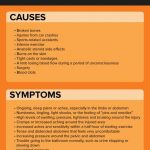
Contents
cefodoxime
Cefpodoxime is a third-generation cephalosporin antibiotic used to treat bacterial infections. It is effective against gram-negative and gram-positive bacteria and strains that are resistant to earlier generations of cephalosporins. Gram-negative and gram-positive bacteria are identified by the Gram stain lab test.
Cefpodoxime kills bacteria by inhibiting the synthesis of peptidoglycan, a vital component of the bacterial cell wall. It is a beta-lactam antibiotic that blocks penicillin-binding proteins, which are essential for peptidoglycan biosynthesis.
Some bacteria develop resistance to beta-lactam antibiotics by producing beta-lactamases, enzymes that destroy the antibiotics. However, cefpodoxime remains effective against many bacterial strains despite the presence of beta-lactamases.
The brand Vantin has been discontinued in the USA, but generic cefpodoxime is available.
Cefpodoxime is used to treat various bacterial infections:
Adult
- Acute bronchitis and exacerbations of chronic bronchitis
- Acute community-acquired pneumonia
- Acute maxillary sinusitis
- Pharyngitis/tonsillitis
- Skin and skin structure infections
- Gonorrhea
- Urinary tract infections
Pediatric
- Acute maxillary sinusitis
- Acute otitis media
- Pharyngitis/tonsillitis
- Chronic bacterial bronchitis exacerbation
- Acute uncomplicated cystitis
- Acute community-acquired pneumonia
Cefpodoxime is effective against the following organisms:
- Gram-positive bacteria: Staphylococcus aureus, Staphylococcus saprophyticus, Streptococcus pneumoniae, Streptococcus pyogenes
- Gram-negative bacteria: Escherichia coli, Klebsiella pneumoniae, Proteus mirabilis, Haemophilus influenzae, Moraxella catarrhalis, Neisseria gonorrhoeae
Warnings
- Do not take cefpodoxime if you are hypersensitive to it or other cephalosporin antibiotics.
- Use cefpodoxime with caution in patients with a history of penicillin or beta-lactam allergy.
- Long-term or repeated treatment with cefpodoxime may cause overgrowth of non-susceptible organisms.
- Cefpodoxime, like other antibacterial agents, can cause Clostridium difficile overgrowth and associated diarrhea or colitis.
Side Effects
Common side effects of cefpodoxime include gastrointestinal effects, rash, hives, itching, and fungal dermatitis. This is not a complete list of side effects. Contact your doctor or report side effects to the FDA.
QUESTION
Dosages
Oral Suspension:
- 50 mg/5 mL
- 100 mg/5 mL
Tablet:
Adult:
Acute Bronchitis and Acute Exacerbations of Chronic Bronchitis:
- 200 mg every 12 hours for 10 days
Acute Community-Acquired Pneumonia:
- 200 mg every 12 hours for 14 days
Acute Maxillary Sinusitis:
- 200 mg every 12 hours for 10 days
Pharyngitis/Tonsillitis:
- 100 mg every 12 hours for 5-10 days
Skin/Skin Structure Infections:
- 400 mg every 12 hours for 7-14 days
- Uncomplicated gonorrhea in men and women; rectal gonococcal infections in women:
- 200 mg once
Uncomplicated Urinary Tract Infections:
- 100 mg every 12 hours for 5-7 days
- 200 mg every 12 hours
Dosing Modifications (Renal Impairment):
- CrCl under 30 mL/min: give every 24 hours
- Hemodialysis: give 3 times weekly after dialysis
Hepatic Impairment: Dosage adjustment is not necessary.
Pediatric:
General Dosage Range:
- Infants under 2 months: safety and efficacy not established
- Infants 2 months to children 12 years old: 5 mg/kg every 12 hours; individual doses not to exceed 200 mg
- Children above 12 years: 100 to 400 mg every 12 hours
Acute Maxillary Sinusitis:
- Infants under 2 months: safety and efficacy not established
- Infants 2 months to children 12 years old: 5 mg/kg every 12 hours for 10 days; individual doses not to exceed 200 mg
- Children above 12 years: 200 mg every 12 hours for 10 days
Acute Otitis Media:
- Infants under 2 months: safety and efficacy not established
- Infants 2 months to children 12 years old: 5 mg/kg every 12 hours for 10 days; individual doses not to exceed 200 mg
- Children above 12 years: 200 mg every 12 hours for 10 days
Pharyngitis/Tonsillitis:
- Infants under 2 months: safety and efficacy not established
- Infants 2 months to children 12 years old: 5 mg/kg every 12 hours for 5-10 days; individual doses not to exceed 100 mg
- Children above 12 years: 100 mg every 12 hours for 5-10 days
- Chronic bacterial bronchitis exacerbation
- Children above 12 years: 200 mg every 12 hours for 10 days
Acute uncomplicated cystitis:
- Children above 12 years: 100 mg every 12 hours for 5-7 days
Acute Community-Acquired Pneumonia:
- 200 mg every 12 hours for 14 days
Drug Interactions
Inform your doctor of all medications you are currently taking. Cefpodoxime has no known severe interactions but has moderate interactions and minor interactions with other drugs. Consult your doctor before making any changes to your medication.
Cefpodoxime is acceptable for use during pregnancy if clearly needed. Use during labor and delivery has not been studied. It is not recommended for nursing mothers.
In summary, cefpodoxime is a third-generation cephalosporin antibiotic used to treat various bacterial infections. It has a broad spectrum of activity against gram-negative and gram-positive bacteria. Common side effects include gastrointestinal effects, rash, and itching. Cefpodoxime has interactions with several other drugs. Consult your doctor for more information.


